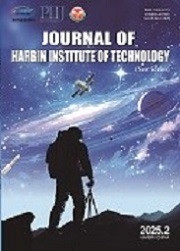| Author Name | Affiliation | | Shoupeng Song | Department of Instrument Science and Engineering, Jiangsu University, Zhenjiang 212013,Jiangsu,China | | Yingjie Ni | Department of Instrument Science and Engineering, Jiangsu University, Zhenjiang 212013,Jiangsu,China | | Yonghua Shao | Department of Instrument Science and Engineering, Jiangsu University, Zhenjiang 212013,Jiangsu,China |
|
| Abstract: |
| Finite rate of innovation sampling is a novel sub-Nyquist sampling method that can reconstruct a signal from sparse sampling data. The application of this method in ultrasonic testing greatly reduces the signal sampling rate and the quantity of sampling data. However, the pulse number of the signal must be known beforehand for the signal reconstruction procedure. The accuracy of this prior information directly affects the accuracy of the estimated parameters of the signal and influences the assessment of flaws, leading to a lower defect detection ratio. Although the pulse number can be pre-given by theoretical analysis, the process is still unable to assess actual complex random orientation defects. Therefore, this paper proposes a new method that uses singular value decomposition (SVD) for estimating the pulse number from sparse sampling data and avoids the shortcoming of providing the pulse number in advance for signal reconstruction. When the sparse sampling data have been acquired from the ultrasonic signal, these data are transformed to discrete Fourier coefficients. A Hankel matrix is then constructed from these coefficients, and SVD is performed on the matrix. The decomposition coefficients reserve the information of the pulse number. When the decomposition coefficients generated by noise according to noise level are removed, the number of the remaining decomposition coefficients is the signal pulse number. The feasibility of the proposed method was verified through simulation experiments. The applicability was tested in ultrasonic experiments by using sample flawed pipelines. Results from simulations and real experiments demonstrated the efficiency of this method. |
| Key words: FRI ultrasonic signal sparse sampling signal reconstruction prior information |
| DOI:10.11916/j.issn.1005-9113.16182 |
| Clc Number:TB559 |
| Fund: |
|
| Descriptions in Chinese: |
| 超声信号FRI稀疏采样数据重构中先验信息的获取 宋寿鹏,倪英杰,邵勇华 (江苏大学 仪器科学与工程系,江苏 镇江 212013) 研究目的:提供一种从超声信号采集的稀疏数据中重构原信号时,回波中脉冲数目获取方法。该方法可以从稀疏采样数据中直接求得脉冲串数目,避免信号重构时预先给出脉冲串数目带来的不足。 研究方法: 论文首先从理论上给出了根据稀疏采样数据获取脉冲数目的方法,然后分析了噪声对该方法的影响,并给出了解决方法,最后通过仿真和实际测试验证了提出方法的有效性。当从超声信号中获取到稀疏采样数据后,将这些稀疏数据转换成离散傅立叶系数,形成Hankel矩阵,实施SVD分解,去除由于噪声产生的分解系数后,剩余的分解系数即为脉冲数目。 结果: 提出一种从超声信号FRI稀疏采样数据中直接估算脉冲串数目的方法,仿真实验分析了噪声水平阈值因子的影响,给出了实验中选取该因子的经验公式。实验结果表明该方法有效可行。 结论: 该方法可有效解决目前利用FRI稀疏采样数据重构信号时人为给定脉冲串数目的弊端,不需要先验脉冲宽度信息,可通过稀疏数据的离散傅立叶变换、构建汉克尔矩阵及奇异值分解得到脉冲串的数目。信号中噪声的影响可有效消除,可用于实际中脉冲超声检测信号的稀疏采样与重构。 关键词:FRI;超声信号;稀疏采样;信号重构;先验信息 |




